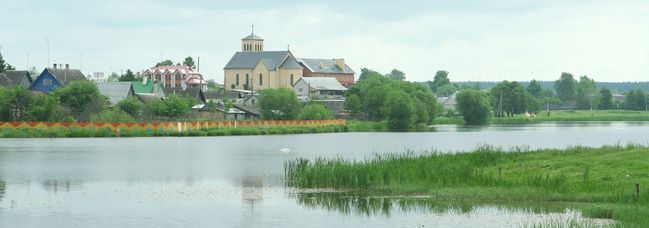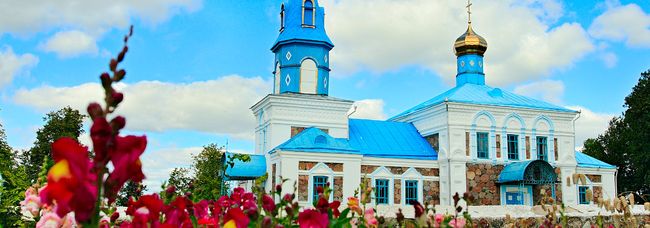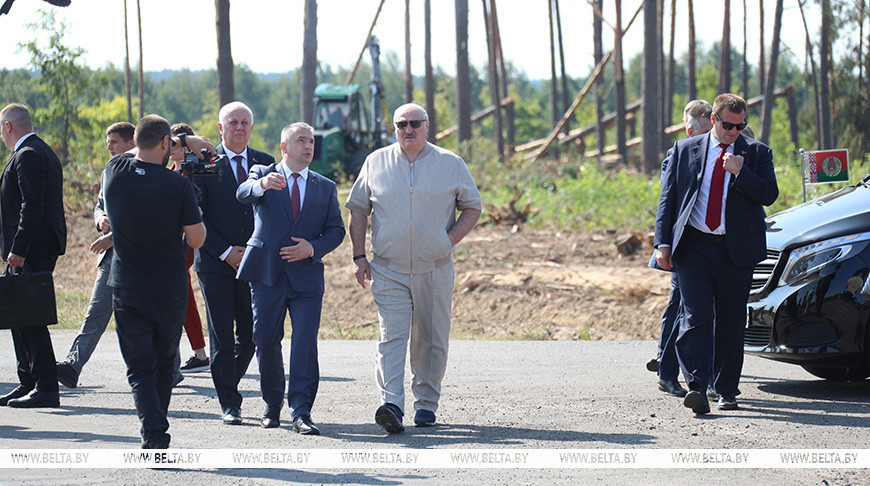18 September 2024
Lukashenko steers storm recovery, timber salvaging effort
In July 2024, a bad storm hit Belarus. It became a national disaster, leaving several people killed and injured. Thousands of homes were left without electricity. Gusty winds broke trees like matches. The country deployed all kinds of forces to clean up storm damage. The longest path lies ahead of the forestry industry. In this episode, we will tell you which regions of Belarus were not spared by the storm. How much does it cost to restore one hectare of forest? What will happen to windfall wood?Which regions of Belarus were hit the worst?
Belarus has never faced such a large-scale storm before. The raging elements became a test for many services and agencies. Immediate action needed to be taken.
“An area of 46,000 hectares with more than 6 million m3 was damaged. Of these, more than 21,000 hectares or 5.7 m3 were subject to salvage logging. We already said that it was the worst storm in the history of Belarus,” said Aleksandr Dragun, First Deputy Forestry Minister of the Republic of Belarus.Gomel Oblast was hit the worst. The storm swept across Mogilev Oblast. The elements also wreaked havoc in Grodno Oblast. Two forestries in Ivye and Novogrudok were badly damaged in the region. “Due to the complexity of the situation, this issue was immediately taken under control by the head of state. The authorities set the deadlines and deployed maximum professional forces and also involved all segments of the population, organizations of all kinds of ownership to salvage timber. More than 400 harvesters were deployed to the region to clean up storm-damaged forests. These are complex logging areas. We use equipment. In some areas, we use manual labor, where equipment cannot be used for various reasons,” said Aleksandr Dragun, First Deputy Forestry Minister of the Republic of Belarus.Storm relief instructions from the president
On 19 July, Aleksandr Lukashenko convened a conference call. One of the main issues was the storm relief effort. The president urged to mobilize the population and specialists. At the request of the forestry minister, he instructed to allocate additional equipment.
“MAZ must do its best and produce up to 100 of these vehicles and hand them over to the Forestry Ministry,” the head of state said. In addition to their own forces, Mogilev Oblast also involved third-party organizations. Three forestry enterprises of Minsk Oblast came to help. They were from Berezino, Smolevichi and Cherven.
“We have 101 harvesters, 75 forwarders in operation; 650 people are involved in the cleanup effort. We also have tractors for cleanup and soil preparation, timber trucks for transporting the wood. To date, about 390,000 m3 have been logged in the region. About 280,000 have been logged in the Bykhov Forestry Association that was affected the most,” said Nikolai Lyapko, Chief Forester of the Mogilev State Production and Forestry Association.
There is still a lot of work to do. First responders will never be able to forget the things they saw in the first days after the storm. Many years of work by several generations - a hundred-year-old forest - was gone within minutes.
“When we arrived, we saw a hundred-year-old forest broken like matchsticks. Every single tree was damaged. It was heartbreaking. In the first days, on the first night, access roads and roads to populated areas were cleared. Railway tracks were also cleared in Bykhov District so that trains could move freely,” said Nikolai Lyapko.How are instructions of the head of state fulfilled?
Forestry workers, road services and power engineers worked in sync. Work is still in full swing at windfall sites.
“People engaged in harvesting and logging operations usually work 12 hours a day - from 8:00am to 9:00pm, having a 2/2 schedule. But some equipment is used around the clock, operated by three people per shift,” said Nikolai Lyapko.For onlookers such places look like scenes from disaster movies. There hasn't been any precipitation for a long time, hence a lot of dust around. It's not enough to just remove the fallen log. The soil needs to be prepared for planting a new forest.
“The wood is harvested by harvesters and delivered to intermediate warehouses using forwarders or our forest carts. After that, windfall areas are cleaned up and the soil is prepared for planting forest crops. We plan to start planting this autumn. We are waiting for favorable weather – lower temperature and rain,” Nikolai Lyapko added.Where will damaged timber be used?
The timber in the damaged areas is practically the same as the one that is harvested during planned logging. It will be used for the same purposes. The main consumers are enterprises of the Bellesbumprom concern. More than 700,000 m3 of timber have already been shipped to them.
“The head of state gave an instruction to use the fallen timber from windfall areas primarily to restore damaged buildings of individuals and organizations. The head of state also greenlit a more preferential procedure to speed up this process. Applications are filed by regional executive committees that collect this information from district executive committees,” Aleksandr Dragun said.Today, applications for 40,000 m3 have already been filed. This timber will be used to restore damaged buildings. Lumber was allocated without applications to those who literally lost a roof over their heads.
When will damaged forests be restored?
In August 2024 the head of state visited Mozyr District. The president studied the storm recovery efforts in one of the affected areas. It turned out that this very area was planted with trees aged up to 100 years. “This forest should have been harvested a long time ago. It is commercial timber. Some 80-100 years old. It should have been harvested a long time ago, and you did not do it. God helped you, fell it down for you. Now we will have to collect it as quickly as possible,” the Belarusian leader said.
According to the head of state, demand for timber has recovered on the world market and domestic products will be in demand.The president instructed to restore the damaged areas by the end of next year. Forestry workers have three busy seasons ahead: autumn-spring-autumn. Some 40% of the damaged areas will be restored this year. Another 40% will be reforested in the spring of 2025. The remaining 20% - next autumn. The reforestation program includes a list of areas and a set of measures. Plans are in place to plant new forests in some places and leave the rest for natural regeneration.“We have already determined that we need about 55 million pieces of standard planting material to restore damaged areas. We have about 27 million pieces of standard planting material for this autumn. There are 79 nurseries across the country that grow about 300 million pieces of standard planting material every year. We see that we will have plenty of it to restore these areas,” Aleksandr Dragun said.
How much does it cost to restore a hectare of forest?
The main species is pine. About 26 million seedlings is needed. There is also a need for 10 million birch seedlings, 4 million spruce seedlings, 3 million oak, 1.5 million alder, maple. Everything will depend on an area. In 2014, Aleksandr Lukashenko visited the National Forest Breeding and Seed Center. The president was shown the cone processing methods to produce seeds and grow seedlings with a closed root system.Specialists have counted that one hectare of forest with a closed root system will cost Br3,000. The one with an open root system - Br1,400. Belarus has no shortage of seedlings. Anyway, there is something we can do to help our specialists. We can do our best to prevent wildfires. After all, humans cause most of them by leaving campfires unattended, burning dry grass in warm and windy weather. We cannot prevent acts of nature, storms. But we can do our best to preserve the natural wealth.






















